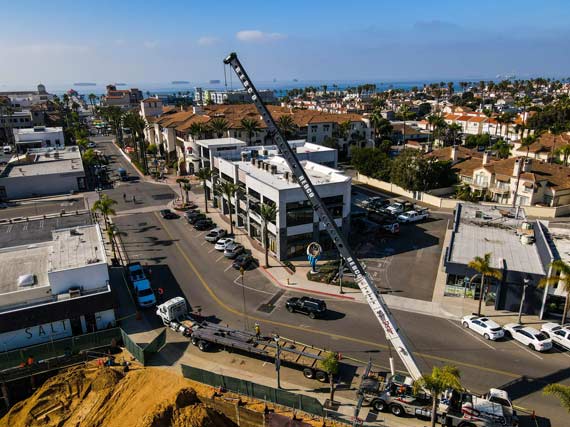When using a crane for heavy machinery lifting, one of the most important things is regular maintenance. Knowing common problems that are commonly faced by the workers is the first step to avoid them and prolong the life and maintain its operating efficiency.
Here, we are going to share some of the common problems that occur with overhead cranes that we inspect before you rent a crane. Rest assured that you have professionals and experts in the industry to take care of the things you might not be thinking about.
- Wire Rope Degradation
Many operating conditions such as stress, bending, loading conditions, loading speed, sling design, environmental conditions, and lubrication can impact the life of wire ropes. After years of use, wire ropes used in overhead cranes get damaged or degraded. Sometimes, cranes’ ropes can also be affected by other factors.
At times, the wire ropes jump out of the reeving system and experience a reduction in the diameter due to loss of core support, corrosion, and wear of outside wires. When wire ropes get weakened over time, they can also break.
So, cranes are regularly inspected for wire rope issues like bird-caging, corrosion, extreme wear, and abrasion.
- Crane Getting Out of Alignment
An overhead crane that has gotten out of alignment can experience skewing issues. It can lead to significant stresses and damage to the entire equipment used for heavy machinery lifting. When a crane is improperly aligned, the forces that were not accounted for during designing and installation phase can create too much stress to the runaway beams and tie-back structures.
An out-of-alignment crane can lead to accidents, crane failure, crane derailment, and equipment downtime. As a result, it can further lead to productivity loss and costly repairs. When a crane is out of alignment, it can lead to loud scraping noise, broken or cracked wheel flanges, extra power required to move the crane, wheels that float over the rail and crash down. With us, you can be assured that you will get a properly aligned crane.
- Abnormal Wear in End Truck Wheels
End truck wheels are the parts that demand frequent maintenance, replacement, and adjustment. After years of use, it is common for end truck wheels to wear down and when they do, they must be replaced with the new ones.
A range of materials can be used for manufacturing these wheels and some of the examples are alloys, low-carbon steel, medium-carbon steel, and even polyurethane (for gantry cranes). The higher amount of carbon indicates higher hardness in wheels. Other methods are also used to enhance the hardness of wheels, which in turn increases the service life and loading capacity of the wheels.
When wheels and similar items like wheel bearings and flanges start wearing down prematurely, it can be an indication of the problem that the crane is not tracking down the runway system properly and might be skewed. Wheels when installed using an existing rail system tend to wear down faster when compared to the new installation.
To avoid the premature wearing of the end truck wheels, we make sure that the overhead crane runway system is designed, tested, and regularly checked by trained professionals.
If you are renting a crane to lift heavy machinery, you can have a peace of mind that the crane is fully inspected and in safe operating condition.

